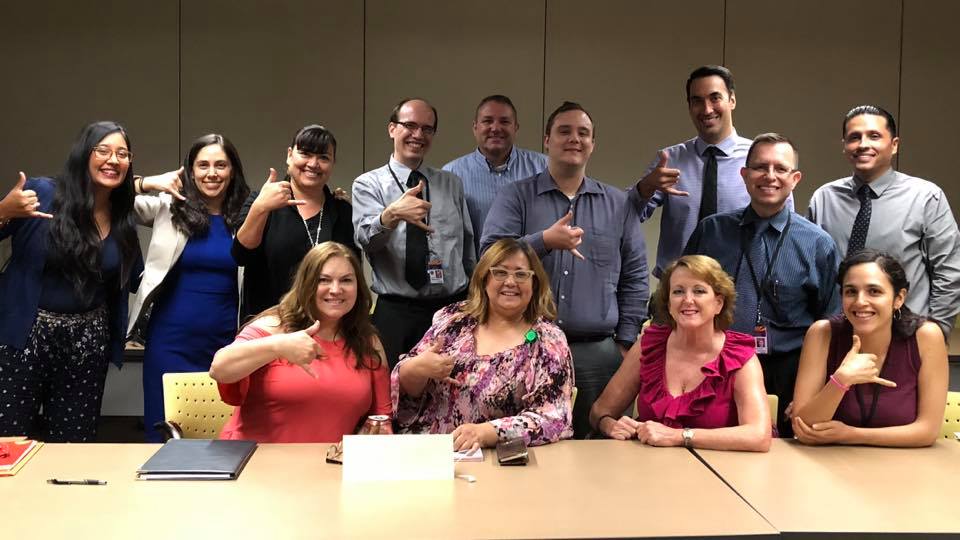Summer Internship at Superior Court of Arizona in Maricopa County
My name is Gabriela and I am a student of Translation and Interpretation at the Middlebury Institute of International Studies at Monterey. I recently finished my first year in the MA and my first internship in the US. My goal was to experience legal interpreting since it is one of the areas of specialization in community interpreting. I wanted to know whether I liked it or not, what the actual work of a legal interpreter entailed, and whether or not I could do it.
I have to say that networking proved to be essential for this, because it was thanks to other MIIS alumni that I found three really interesting internships. All three of them were in Superior Courts. One took place in Phoenix, another one in New Jersey, and the last one in New York. In the end, I decided to accept the Phoenix internship and I do not regret it in the least.
Phoenix is the hottest place I have ever lived in, but one actually feels cold inside the courtrooms due to the A/C. The Maricopa County Superior Court has many sites in Phoenix, but the main buildings are in the downtown area of Phoenix, which is where the Court Interpretation & Translation Services offices were and where I worked.
After a week, I quickly realized that interpreters are never in their cubicles. They are always running from one courtroom to another having to deal with changes in schedule all the time. The work of a legal interpreter may involve much more than what people may usually think. Let’s take, for example, a criminal case. By the time the trial begins, the interpreter or group of interpreters will have carried out a very extensive research of the case to be as familiarized with it as possible. They will still have many challenges to face because they won’t know the questions the attorneys are going to ask or the answers the witnesses will give. Thus, research and practice are essential in this area, also specialization. Not all interpreters handle all types of cases (although they can, because they rotate), and certain areas require specific skills. For example, interpreting in juvenile will require management skills from the interpreter due to the fact that there are many more persons involved. There are times when everyone is speaking at once, and so the job of the interpreter is to handle these types of situations, otherwise he or she won’t be able to interpret accurately. Therefore, in a way, the work of the interpreter also involves educating those who are involved in a trial.
However, the interpreter has the duty to educate him or herself as well. Continuous education is essential to keep up to date.
This internship involved practice, notetaking, listening, and (most of all) observing. My supervisor would tell me and the other intern to observe what was happening, the persons involved and their roles… Basically, who was where and why. As I would learn, in a courtroom, everyone had its own special and designated place, except for the interpreters. Interpreters need to be where they can listen. Thus, they will stand near the defendant or next to the judge, in the seats designated for the victims or in the witness stand.
After observing, we would go to the classroom where our supervisor would test us to see how much we could take and understand from what we saw. This would be followed by an explanation of everything that happened in that particular hearing, reunion or trial. I realized that this process of learning how the judiciary system works really excited me. In the end, I did realize that legal is an area that I find truly fascinating. You won’t know it until you try it.
I think that this experience was truly special. It will help me not only in the next semester when I take the legal interpreting course, but also in the long-term, because now I have a better understanding of one of the branches of the American government. This will also help me as a translator because I will be more aware of the differences between the Mexican and the American judiciary systems. In any case, I think that this is important information for any citizen and that everyone should strive to understand it even though it may be very complex at times.
As a Mexican, this experience was also very important because I got to see immigrant cases first hand and how interpreters bridge cultural differences that at times seem insurmountable. I enjoyed this experience very much and learned many things from it. But this is only the first step; I hope I can keep on learning more and sharing this with my classmates or anyone who is interested.

“This photograph was taken during a series of continuing education classes for the Maricopa County Interpreters.”



You must be logged in to post a comment.